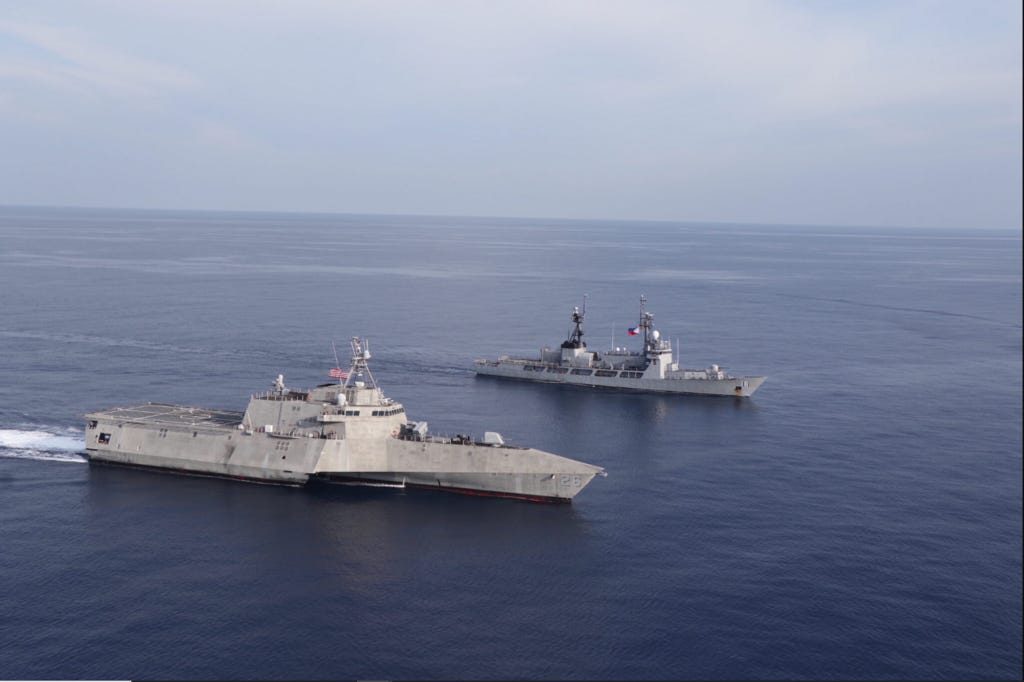South China Sea Confrontations Intensify
Chinese and Philippine vessel collisions heighten risks of miscalculation, drawing in U.S. treaty commitments.
Tensions in the South China Sea have entered a more dangerous phase. A collision between Chinese and Philippine vessels—part of a long series of maritime confrontations—has heightened fears of open conflict. While no lives were lost, the symbolism is striking: disputes once confined to diplomatic notes are now being played out with steel on water.
Image: The U.S. Navy littoral combat ship USS Mobile (LCS-26) (left) conducts a Maritime Cooperative Activity with the Philippine Navy patrol ship BRP Ramon Alcaraz (PS-16) (right) in the South China Sea in July 2024.
The stakes go far beyond scattered reefs. The South China Sea carries a third of global trade. It is also central to U.S. alliances in Asia, with Washington bound by treaty to defend the Philippines in the event of armed attack. Each incident tests American resolve: would Washington act if Manila faced sustained coercion?
Beijing’s strategy is incremental: deploying coast guard ships, maritime militias, and economic pressure to establish “facts on the water.” Manila, emboldened by closer security cooperation with Washington, is pushing back more openly. The risk is miscalculation: a collision escalating into an exchange of fire, dragging in the United States and perhaps other regional powers.
For China, backing down would undercut its nationalist narrative. For Washington, hesitation would weaken credibility across Asia. For Southeast Asia’s smaller states, the nightmare is being forced to choose sides.
Our Take: The most fragile line is between gray-zone coercion and open warfare. One misstep at sea could redraw Asia’s security map overnight.

